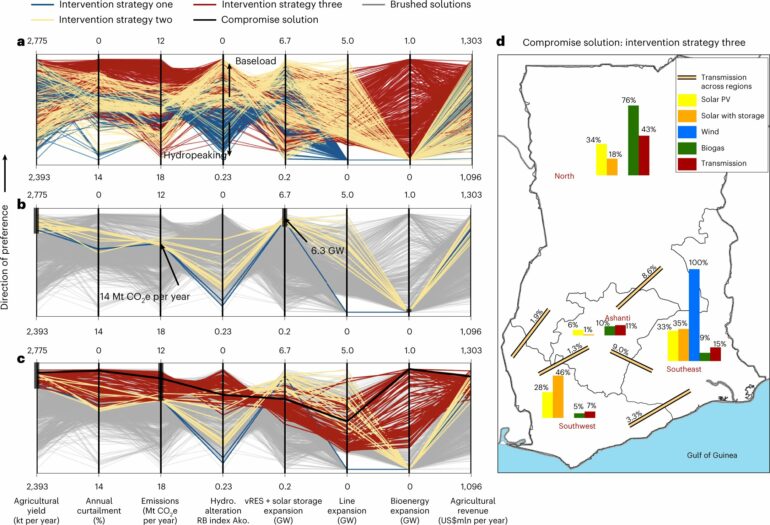A new study published today in Nature Sustainability has found that using hydropower dams to generate low emission energy can cause problems for other economic sectors such as food production unless smart designs are employed.
Access to sustainable electricity is required to deliver the UN’s Sustainable Development Goals, but more than 700 million people around the world still lack reliable electricity access. Renewable energy sources such as hydropower, wind and solar are increasingly being called for to meet rising global electricity demand and climate objectives, and energy planners and investors are rushing to reduce carbon dioxide emissions from electricity production.
The most common large-scale renewable energy today is hydropower—it accounts for 40%, with 55% coming from solar and wind. Hydropower’s big advantage is its flexibility—the ability to turn it on or off quickly means it can act like a vast battery, balancing the grid when wind and solar power are insufficient. When operated strategically, it can allow systems to reply more on those intermittent sources of energy.
However, a study led by experts from The University of Manchester has found that operating hydropower exclusively with this goal can have a negative impact on other sectors like food production which rely on the current way most hydropower dams are used—the production of a consistent supply of “baseload” energy.
It highlights how power generation systems are embedded in complex human–natural systems in which changes affect water, food and the environment to differing degrees. The study shows how cleverly diversifying renewable energy sources and connecting them strategically can enable the creation of low emission resource systems that help the global fight to mitigate climate change.
In Ghana, the researchers used a design tool assisted by artificial intelligence to show how balanced management and investment strategies can help to calibrate good roles and locations for hydropower, bioenergy, solar and wind energies. They found that the solution is a better design brought about by strategic thinking on a national scale and careful multi-sector analysis.
If avoiding multi-sector conflict of hydropower reoperation is an objective from the start, and mitigated with advanced system-scale design methods, excellent solutions can be found which reduce emissions as well as guaranteeing other economic sectors get water when and where they need it.
Navigating trade-offs to reduce greenhouse gas emissions requires significant policy and operational integration within governments, typically across multiple ministries—but few countries, if any, have the ability to identify and negotiate such issues. This design tool will help planners to consider the potentially negative impacts on water, food and ecosystems of inappropriately re-operating energy systems to exclusively increase intermittent renewables. Instead, it helps invest in power systems in a way that balances multisector performance while reducing CO2 emissions.
“Ghana has many development priorities alongside reducing greenhouse gas emissions to meet our commitments under the Paris Agreement,” said Dr. Emmanuel Obuobie, Senior Research Scientist at Ghana’s Council for Scientific and Industrial Research (CSIR). “This study shows how different environmental, economic and social objectives can be balanced at system scale when selecting infrastructure investments.”
More information:
Jose M. Gonzalez et al, Designing diversified renewable energy systems to balance multisector performance, Nature Sustainability (2023). DOI: 10.1038/s41893-022-01033-0
Provided by
University of Manchester
Citation:
Low emission energy systems can create water conflict without smart design (2023, January 27)



